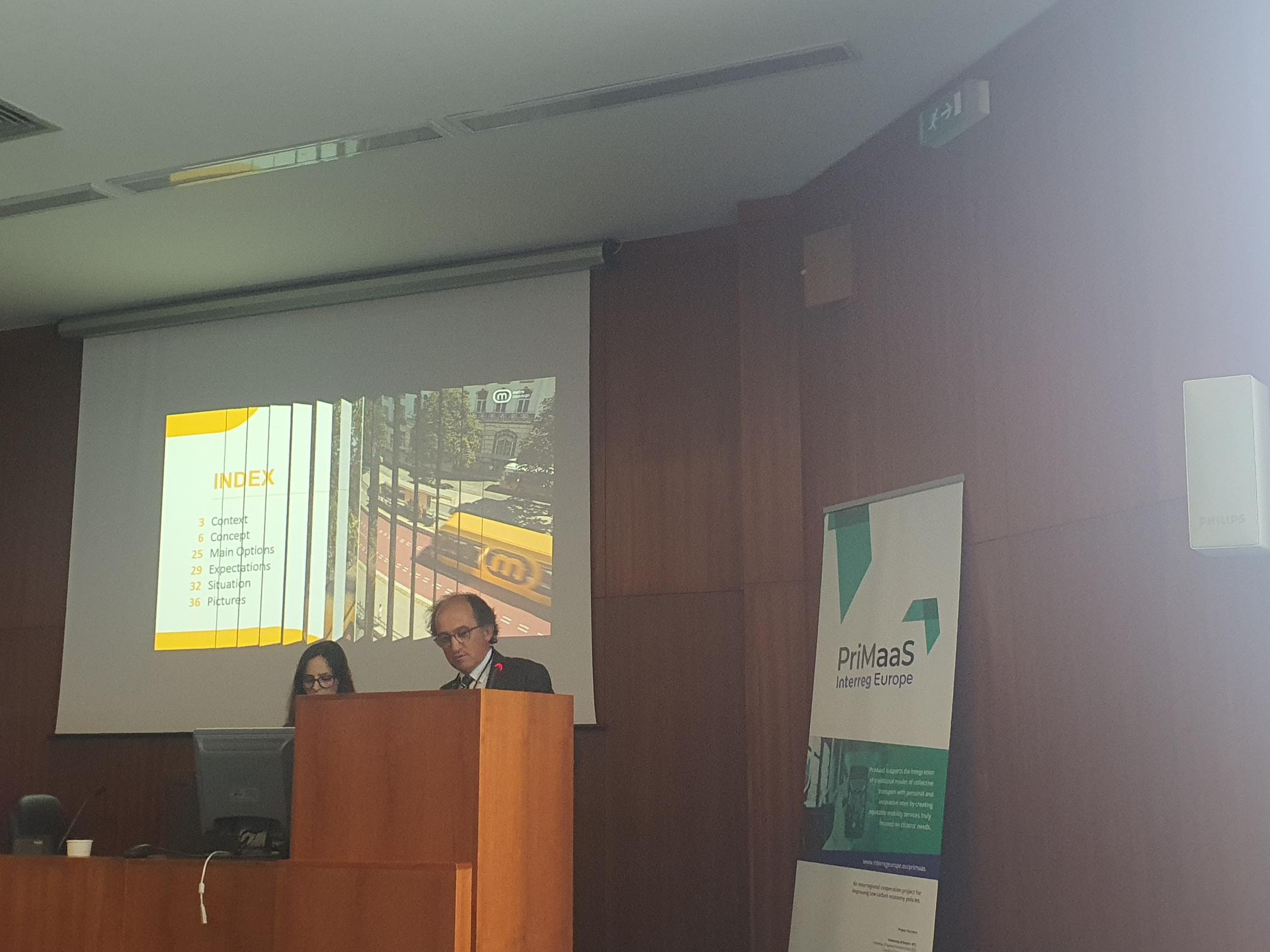
PriMaaS Final Conference
The PriMaaS Final Conference took place on May 30th-31st in the beautiful city of Coimbra in Portugal.
The Mobility-as-a-Service (MaaS) is a recent concept whose main objective is to change the way people travel and pay for mobility services. The provision of transport services is one of the key pillars of strategic importance for regional authorities. Therefore, regional policy instruments can play a valuable role in supporting the introduction of MaaS and simultaneously ensuring these new platforms will contribute to low carbon transport policy-goals, social inclusion and increased levels of accessibility.
The main vision of PriMaaS is to promote the integration of traditional collective transport modes with personal and innovative ones by creating equitable mobility services truly focused on citizens' needs. Regional and national policy instruments should be adapted to promote a fully integrated intermodal approach between all transport services, namely by using data provided and gathered in real time about both travel demand and travel supply. At the same time, multiscale policy instruments should ensure that the more comfortable and affordable travel options for any individual to get from A to B has also minimum carbon levels.
PriMaaS aims at increasing inter-organizational collaboration and building trust among key stakeholders (transport authorities, operators, providers of mobility services and consumers protection organizations). This will be achieved by promoting thematic regional and interregional exchange of experience events.
By collaborating with the policy learning platform, PriMaaS will contribute to feed a knowledge hub focused on increasing accessibility levels based on the MaaS concept, therefore contributing for unraveling the full potential of regional transport networks and maximizing their efficiency. At the end of the 1st phase, 4 policy briefings, 1 Agenda and 6 action plans will be available to support policymakers and prepare regional policy instruments to a new arising paradigm in the transport sector.
€1,563,660.00
Low-carbon economy
The ISTD embodies the “strategy” for Coimbra Region, which involves the strengthening the cohesion policies among the partners with the aim of ensuring the region as a competitive and strong identity. Its main objective is to mobilize economic, social, cultural and institutional agents and reinforce the policy of the region and the Intermunicipal Community (CIM). Therefore, the ISTD is developed in three priority areas: Valorization and Management of Endogenous Resources, Innovation and Human Capital, Cohesion and Social Inclusion - encompassed by two transversal areas, namely, Urban Network and Territorial Structuring, and Network Governance and Efficiency of Administration. OptiMaaS objectives are clearly in consonance with the structuring initiative of the respective action plan of the ISTD: “IE09: Mobilidade e logística” – Mobility and Logistics.
PP2 believes that actions associated with "IE09: Mobility and Logistics" are very important and should be more effective n what concerns the promotion of interoperability and intermodality, namely through innovative MaaS platforms in the Coimbra Region and in the surrounding regions that are under different Transport Authorities. Since certain competences of the CIM RC arose in a subsequent period to the strategy defined for the Coimbra Region, the PI needs to be updated and improved accordingly.
The OP for the use of the European Regional Development Fund (ERDF) for the period 2014-2020 is the main instrument for regional development, for the revival of the economy and for supporting employment in Liguria Region. The European Union's cohesion policy is articulated in 11 Thematic Objectives (OT) aimed at achieving the Europe 2020 objectives of smart, sustainable and inclusive growth, and of the Territorial Cohesion Plan 2020.
Although this instrument represents an valuable tool for the decarbonisation of mobility and more specifically, to boost the uptake of cycling mobility and improve existing public transport infrastructure and services, there is a lack of existing incentives in Liguria Region to develop technical, behavioural and organizational frameworks supporting the development of multimodality and open data platforms that would allow a systemic and integrated realisation of future MaaS services.
Currently, there are very few MaaS operational models around Europe; PP3 and PP7 believe that, capitalizing on a focused exchange of experiences among project partners, OptiMaaS will inspire regional policy makers to implement innovative projects in this area with the ultimate aim of not only benefit from the positive impacts at local levels, but also in view of potential scalability factors related to the development of low-carbon MaaS services at regional level.
Thuringia aims for an annual reduction of its CO2 emissions by 400,000tons by 2023. A major share of this reduction will be realized in the transport sector which is responsible for about 20% of Thuringia’s CO2 emissions. The OP allocates ERDF 48.3 MEUR for sustainable transport. While this PI is being addressed in OptiTrans focusing on improving public transport services in rural and suburban areas through ICT, there is a clear need to establish a strong intermodal integration of suburban and rural regions to primary TEN-T hubs to guarantee accessibility. The likely market penetration in short-medium-term of MaaS will require significant innovation in multiple systems under the existing transport infrastructure. Therefore, new projects should provide right conditions for data-sharing and commercial collaboration, a global understanding of passenger behaviour/demand, a strategy beyond delimited territorial areas and support sophisticated technology to manage the new mobility ecosystem. Thus, the regional public authority aims to use the opportunity to involve regional stakeholders and support implement highly innovative actions that can demonstrate a real added-value and lead to a larger scale of mobility services. Therefore, it is expected the planning of demonstration projects shall inspired from pioneers take European regions (in the MaaS field) good practices will contribute for a more efficient use of ERDF funds into account and based on broad stakeholder involvement.
This sustainable urban mobility plan (SUMP) covers the municipality of Timisoara and 15 surrounding towns and villages, and relates to the period 2016-2030.
The SUMP aims to create a sustainable transport system meeting the needs of the communities in its area by addressing the following five strategic objectives:
1. Accessibility - Offering all citizens transport options that enable them to choose the most appropriate means of travel to key destinations and services;
2. Safety and Security - Improving safety and security for travellers and the community generally;
3. Environment - Reducing air and noise pollution, GHG emissions and energy consumption. Specific note should be taken of national and European Community targets related to climate change mitigation;
4. Economic Efficiency - Improving the efficiency and cost-effectiveness of transport for people and goods;
5. Quality of the Urban Environment - Contributing to enhancing the attractiveness and quality of the urban environment.
The SUMP is clearly focused on reducing CO2 generated by the transport system, but it does not consider the potential of MaaS solutions to contribute efficiently towards the achievement of the strategic objectives. Learning from the expertise of novel developments in the field of MaaS from other OptiMaaS PPs of advanced regions in the field, such as Finland, Sweden or Scotland, the SUMP for the Timisoara Growth Pole can be improved through providing specific support for MaaS developments.
The managing authority (MA) of Finnish structural fund programme is the Ministry of Economic Affairs and Employment. The MA has delegated tasks to the Intermediate Bodies like Council of Tampere Region. In the programming period 2014-2020, a total of 25% of the Finnish ERDF funding will be directed at low-carbon and circular economy activities. The last calls of the programming period are focused on areas like mobility-related applications and solutions, where artificial intelligence is exploited. From the content point of view the funding supports the targets of the Regional Development Program 2018-2020 and RIS3 of the region. The development entity “Accessible Tampere Region” links to ERDF above all from the point of view of digitalization and intelligent traffic. “Sustainable Tampere region” has focus on developing e.g., sustainable resource chains of enterprise ecosystems and low-carbon. Current regional reform will broadly change the way in which governance operates as well as the responsibilities of different actors. Tasks for traffic mainly are transferred to the regions. The new Act on Transport Services brings together transport market legislation and creates the preconditions for digitalization of transport and new business models. With these reforms, we have the possibility to look beyond traditional administrative boundaries
The RTS is a statutory document setting out the transport policy framework for South East Scotland for a 10-15 year period. The current RTS was prepared in 2008, with an update in 2015. It supports wider Scottish Government economy, social and environment aims (e.g., the National Carbon Reduction Target) and links with the strategic land use/development plan for the region. Delivery of the measures included in the RTS is a matter for SEStran and the various stakeholders–in particular the 8 partner local authorities who, together with the Scottish Government, hold the major budgets for transport investment. SEStran itself has only extremely limited funding. Delivery of regional transport priorities has been hampered as local authorities have had to cut budgets and focus on local and immediate priorities. As a result there are gaps in cross-boundary transport provision within the concerned area, congestion is increasing particularly in the periphery of the city and surrounding areas, and environmental targets are being missed. The importance of tackling these issues will grow as the economy and population of the region increase as forecast, and more effective and sustainable approaches to delivery of regional transport services and infrastructure will need to be found. The Strategy therefore requires a comprehensive review, including improving the interactions between different levels of government and better prioritisation of policies and interventions to meet key objectives.

The PriMaaS Final Conference took place on May 30th-31st in the beautiful city of Coimbra in Portugal.
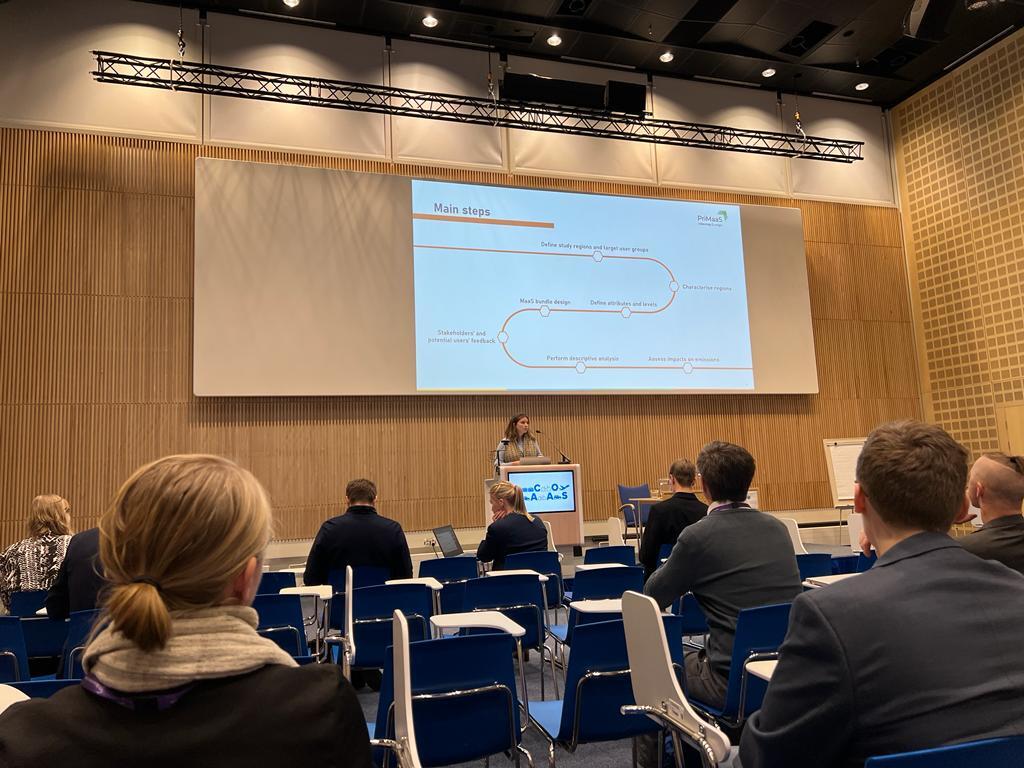
On the 28-29th of November 2022, the 3rd edition of the International Conference on Mobility as a Service, ICoMaas, took place in Tampere, Finland.
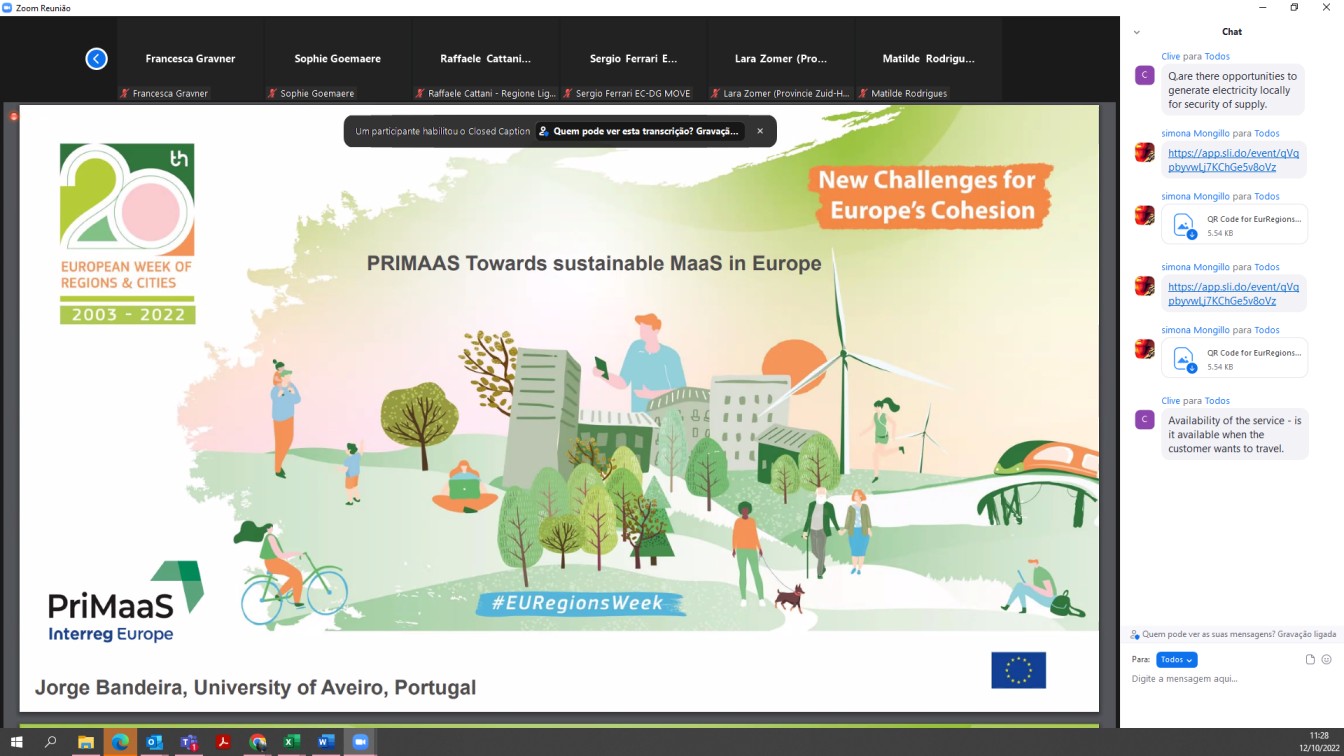
The European Week of Regions and Cities 2022 is the biggest annual Brussels-based event dedicated to cohesion policy.
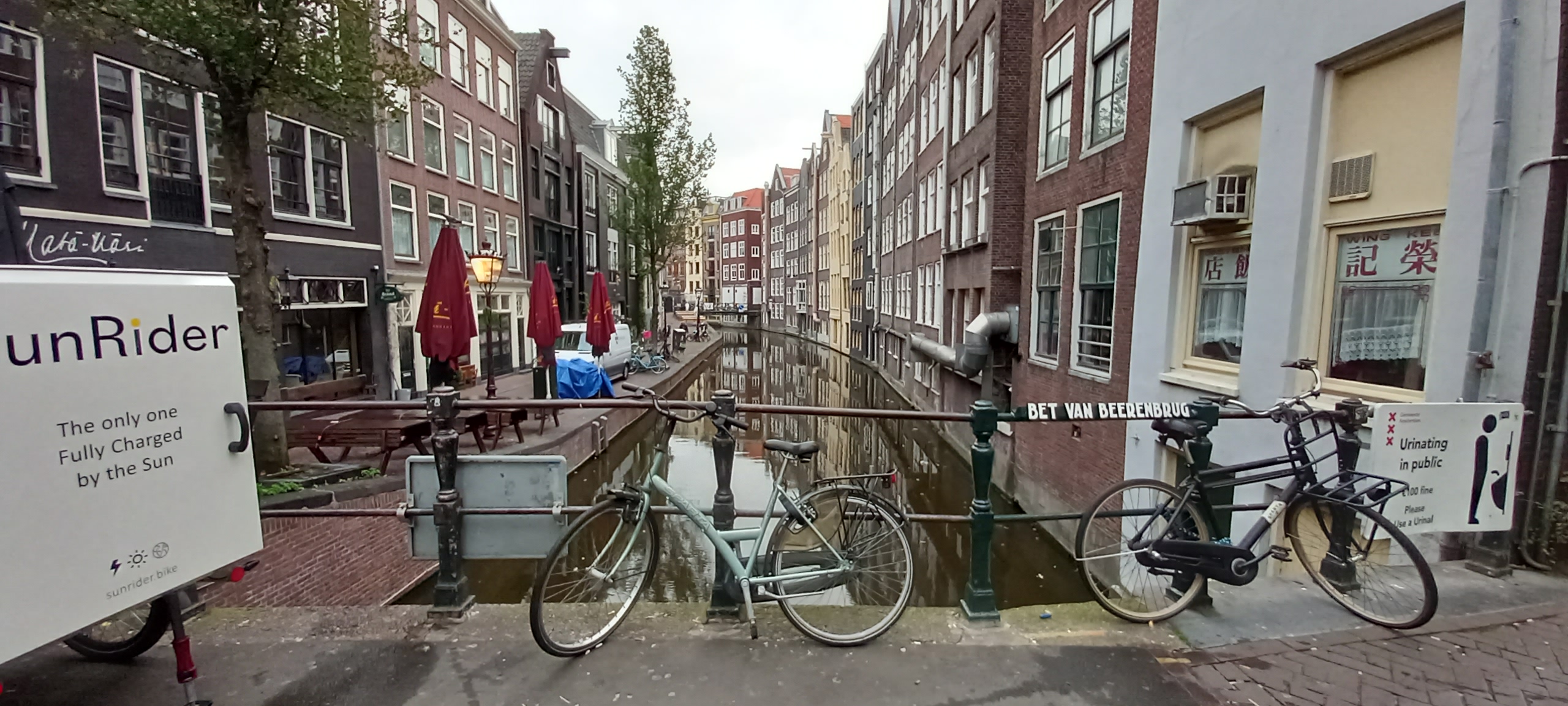
PriMaaS outcomes shared in one of the most important MaaS events in Europe
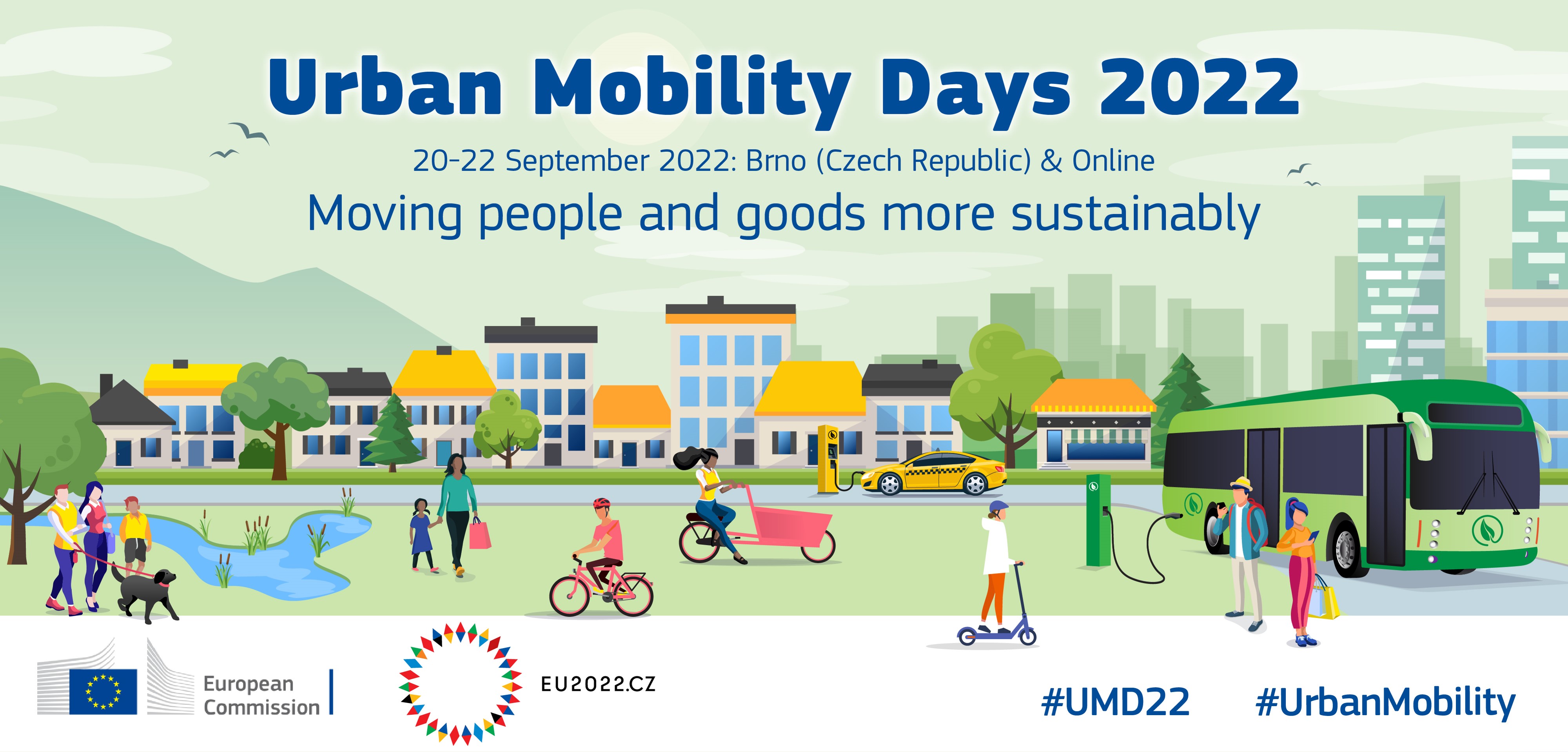
The Urban Mobility Days 2022 conference took place in Brno, Czech Republic
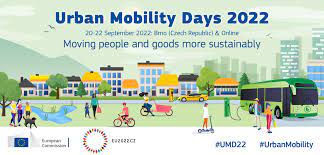
PriMaaS activities will be presented at the UMD22 in Brno, Czechia,
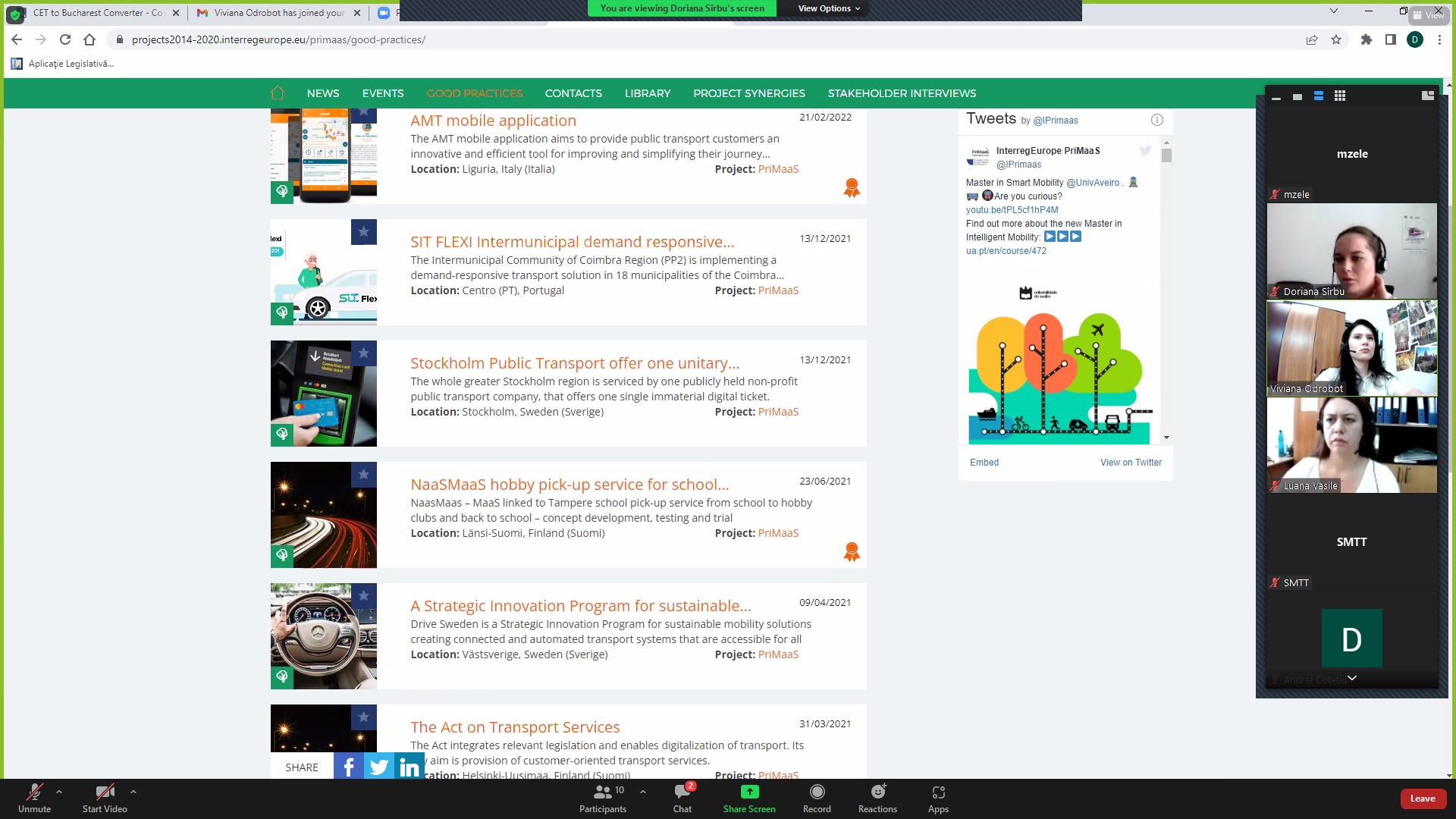
The Stakeholder Meeting with interested parties from Timișoara took place online on July 28, 2022. from 10:00 to 12:30.

The University of Aveiro, the lead partner of the PriMaaS project, sought advice from other regions on how to co-create Mobility as a Service (MaaS) packages

From 28th - 29th June, the Interreg Europe Policy Learning Platform organised a workshop in Thessaloniki, Greece.
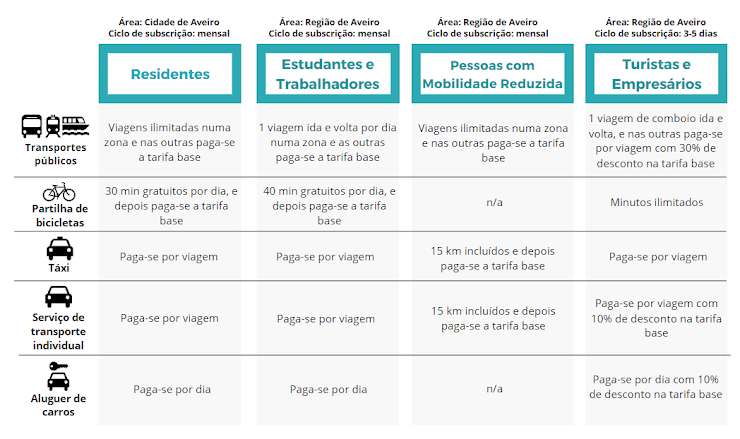
Please share your opinion about your favorite MaaS Bundel? What would make you change your behavior?